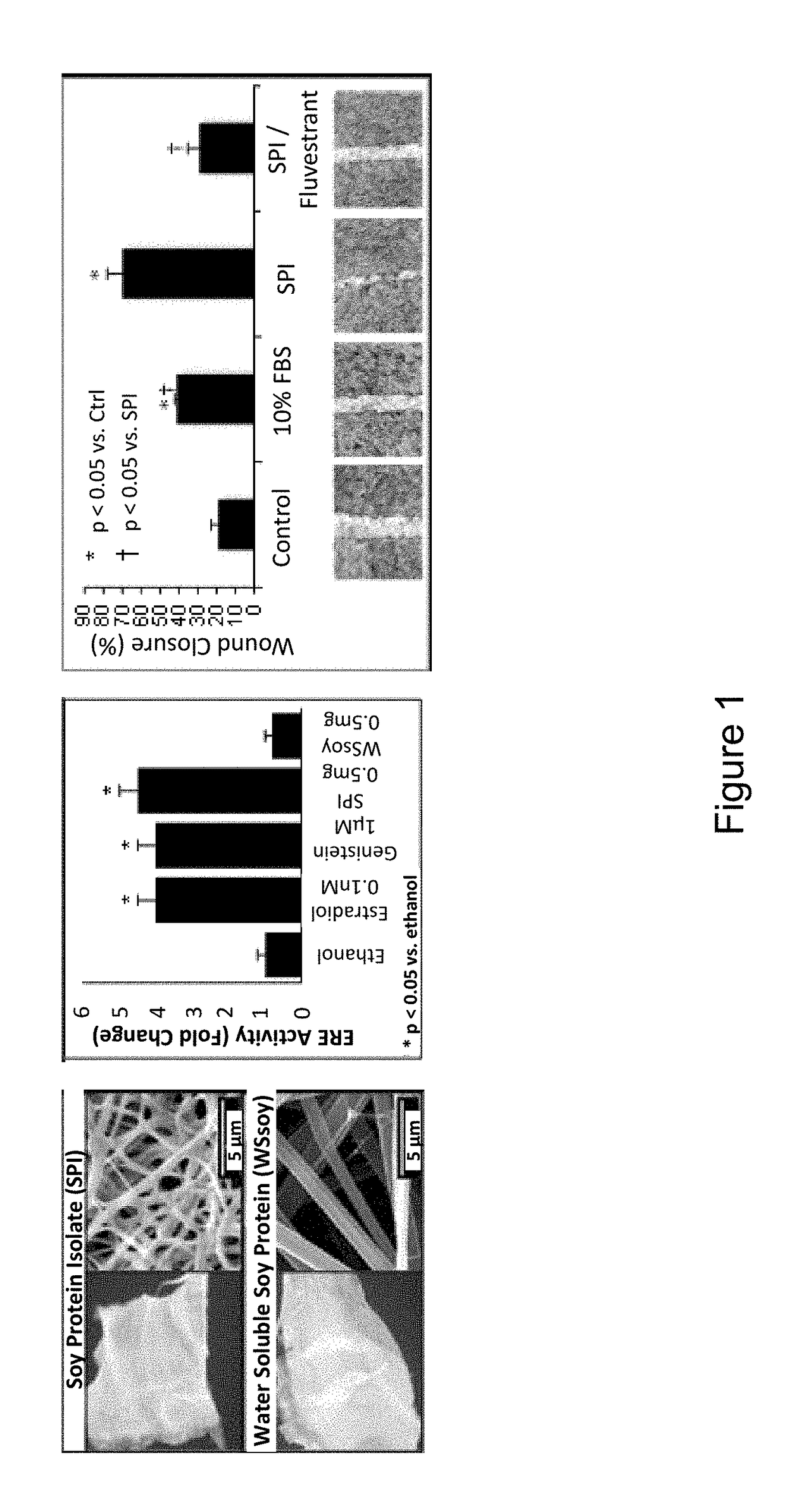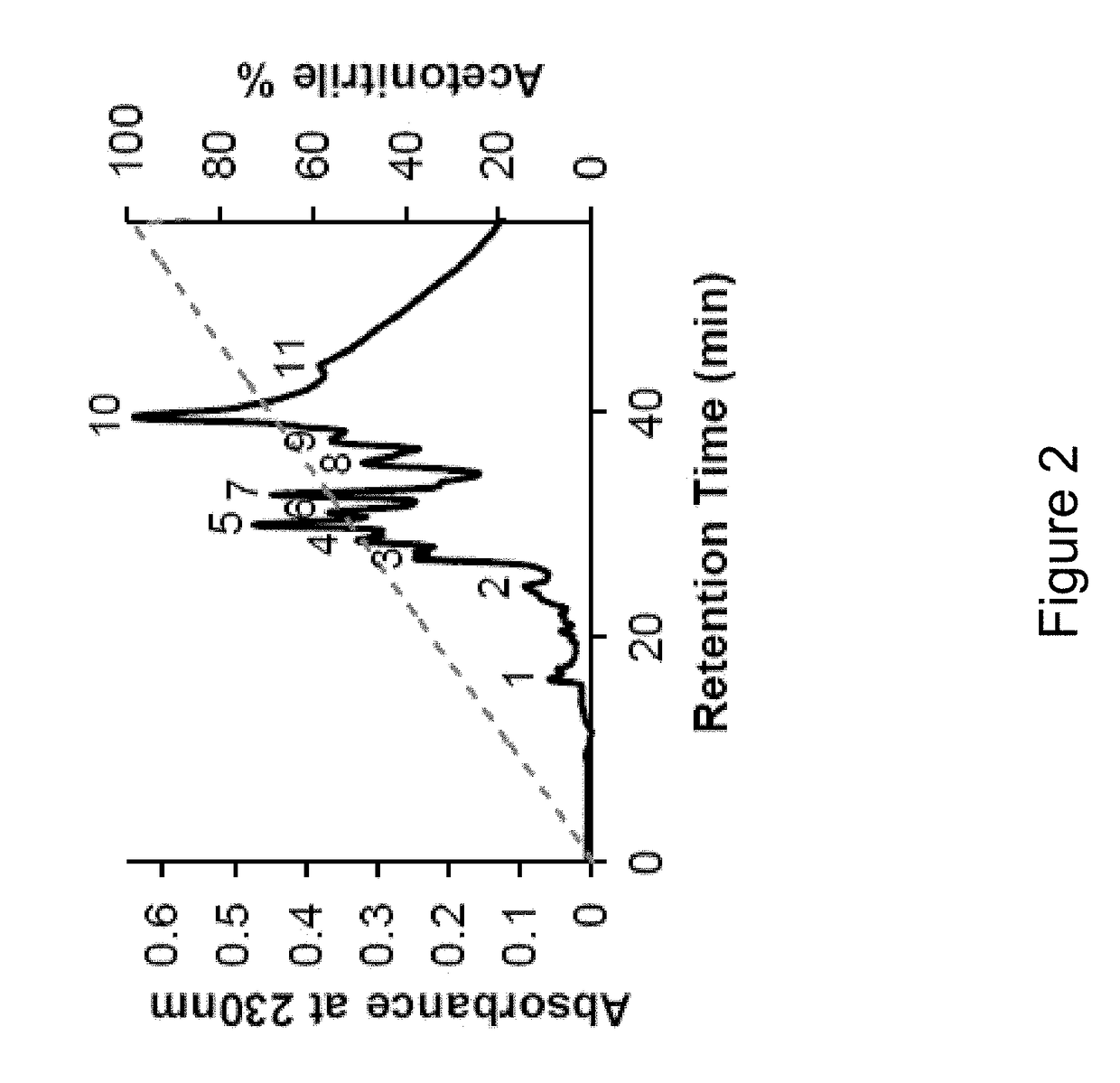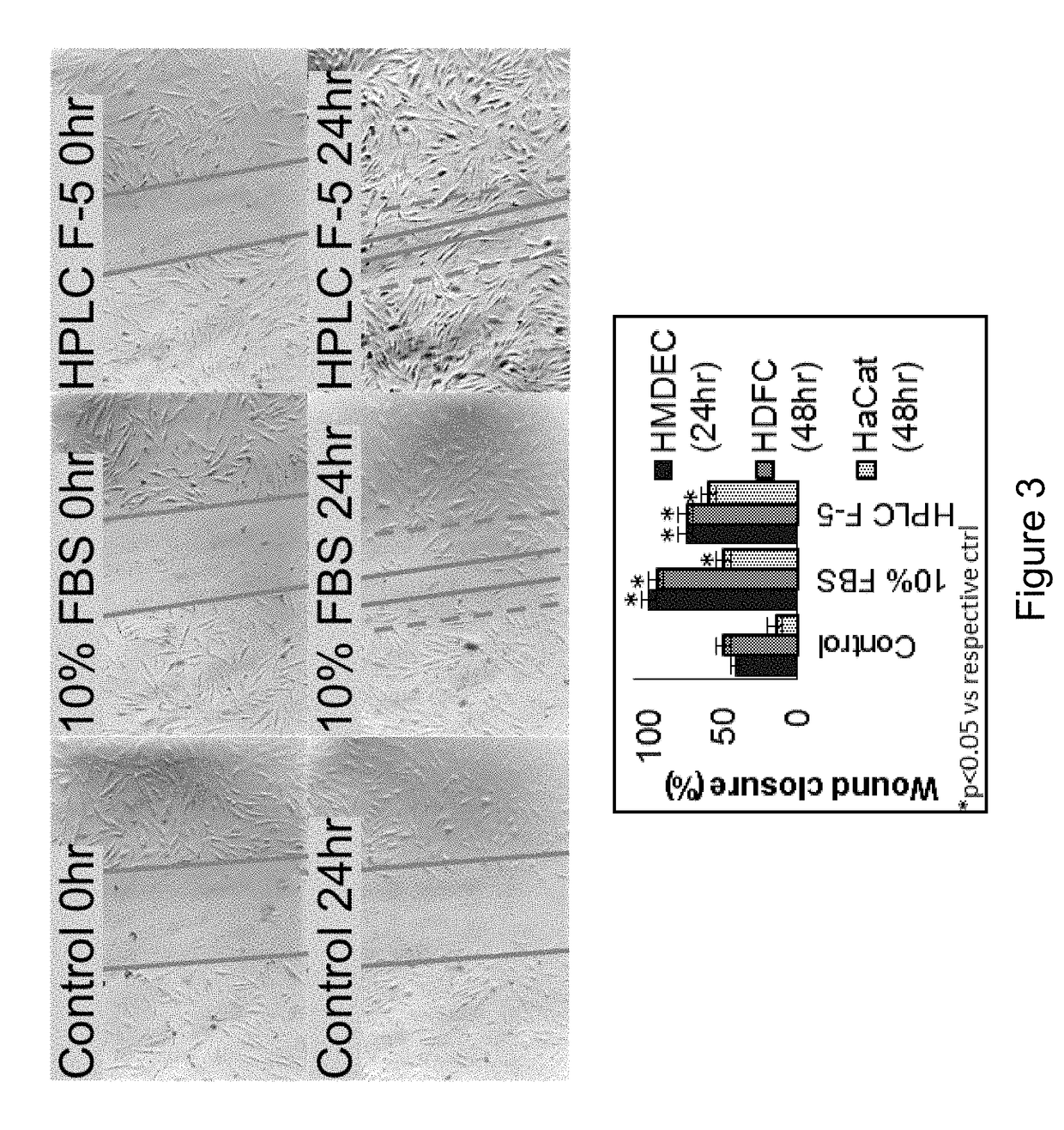Soy-Derived Bioactive Peptides for Use in Compositions and Methods for Wound Healing, Tissue Engineering, and Regenerative Medicine
a bioactive peptide and composition technology, applied in the direction of peptide/protein ingredients, drug compositions, prosthesis, etc., can solve the problems of critical treatment options, significant patient morbidity and financial burden, and inability to induce full regeneration of skin tissue, etc., to achieve rapid wound healing and wound healing
- Summary
- Abstract
- Description
- Claims
- Application Information
AI Technical Summary
Benefits of technology
Problems solved by technology
Method used
Image
Examples
experimental examples
[0248]The invention is further described in detail by reference to the following experimental examples. These examples are provided for purposes of illustration only, and are not intended to be limiting unless otherwise specified. Thus, the invention should in no way be construed as being limited to the following examples, but rather, should be construed to encompass any and all variations which become evident as a result of the teaching provided herein.
[0249]Without further description, it is believed that one of ordinary skill in the art can, using the preceding description and the following illustrative examples, make and utilize the present invention and practice the claimed methods. The following working examples therefore, specifically point out the preferred embodiments of the present invention, and are not to be construed as limiting in any way the remainder of the disclosure.
example 1
[0250]In searching for such “smart” wound matrices, we previously described the beneficial effects of acellular scaffolds electrospun from common purified soy-protein isolate (SPI), which contain phytoestrogens, on the enhanced re-epithelialization and regeneration of appendages in rodents and pigs (Har-el, Y., et al., 2014, Wound Medicine 5, 9-15; Har-el, Y. et al. 2014, Biomedical Engineering Society Annual Meeting). The experiments presented herein demonstrate that wound matrices electrospun from water-soluble soy protein isolate (WSsoy), devoid of isoflavonoids, enhance the healing in a rodent model of full thickness cutaneous wounds.
[0251]Cutaneous wound healing is a complex, multi-step biological process, requiring a coordinated response by hematopoietic cells, fibroblasts, keratinocytes and endothelial cells (Demidova-Rice T. N., et al., 2012, Advances in skin &wound care 25, 304-314). The initial steps of wound healing include re-epithelialization (lateral migration of kerat...
example 2
Enhanced Re-Epithelialization and Angiogenesis are Based in Part on a Pro-Migratory Effect Induced by Soluble Proteins in the Absence of Isoflavonoids
[0254]Many biological activities of commonly used SPI, including, possibly, wound healing, can be attributed to the presence of isoflavonoids (such as genistein), i.e., a sub-class of phytoestrogens that bind to estrogen receptors (ERs) and display weak estrogenic activity (McCarver, G., et al., 2011, Birth Defects Res B Dev Reprod Toxicol 92, 421-468; Thornton, M. J., 2013, Dermatoendocrinol pp 264-270). Therefore, it was first investigated whether water-soluble SPI (WSsoy, marketed as Clarisoy™ by ADM, Decatur, Ill.) preparations contain phytoestrogens, as do other soy-derived biomaterials (Hirsch, K., 2007, Breast Cancer Res Treat 104, 221-230). For this purpose electrospun SPI and WSsoy scaffolds were ethanol extracted and their phytoestrogenic activity was evaluated by comparison to genistein and estradiol E2 using a sensitive bio...
PUM
| Property | Measurement | Unit |
|---|---|---|
| zeta potential | aaaaa | aaaaa |
| zeta potential | aaaaa | aaaaa |
| thickness | aaaaa | aaaaa |
Abstract
Description
Claims
Application Information
 Login to View More
Login to View More - R&D
- Intellectual Property
- Life Sciences
- Materials
- Tech Scout
- Unparalleled Data Quality
- Higher Quality Content
- 60% Fewer Hallucinations
Browse by: Latest US Patents, China's latest patents, Technical Efficacy Thesaurus, Application Domain, Technology Topic, Popular Technical Reports.
© 2025 PatSnap. All rights reserved.Legal|Privacy policy|Modern Slavery Act Transparency Statement|Sitemap|About US| Contact US: help@patsnap.com



